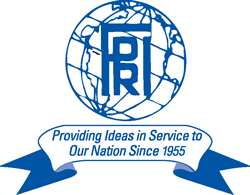By Daniel Loud
The recently concluded COP21 Paris Agreement has been widely lauded as a historic step in combatting global climate change. Of course the next step (or challenge, depending on how you look at it) for this agreement is its implementation. Although nearly 200 countries have committed themselves to reducing their carbon emissions and adapting to the current effects of climate change, it is doubtful that they will live up to their commitments. In the failure of following up on Paris, a great deal of suspicion can be shifted to developing countries, which do not have the funds or institutions necessary to implement meaningful environmental reforms (Dagnet, Northrop, and Tirpak). To this end, many have suggested an international effort toward capacity building, or actions designed to increase a state’s ability to keep up with current environmental standards. In Paris, capacity building was given increased priority with the establishment of the Paris Committee on Capacity Building, which was designed to “identify capacity gaps and needs, foster international cooperation and identify opportunities to strengthen capacity for climate action” (Waskow and Morgan). While the creation of this committee and the importance given to capacity building at Paris reflects the correct instincts, the agreement did not specify any specific steps that will be taken to increase the ability of developing countries to take strong climate action. However, the secret to enhanced capacity building may actually be as simple as greater investment in alternative energy within developing countries.
To many, a strategy of investing in alternative energy may seem too simple to qualify as actual capacity building. In the current discussion, capacity building involves overcoming the deeper obstacles that stand in the way of meaningful environmental reform. However, alternative energy has the potential to resolve these issues on its own, and in a much simpler way. The Paris Agreement accomplished one goal of capacity building, which was to create an international institution dedicated to filling capacity gaps (Waskow and Morgan). However, there are still two obstacles to capacity building that could be very difficult to combat: a lack of public awareness on the causes, effects, and possible solutions to climate change and a lack of national institutions in the developing world that make compliance with agreements such as the recent one more feasible (Dagnet, Northrop, and Tirpak). These problems are deeply rooted in the developing world, and resolving them would take a focused campaign on the part of the Paris Committee to lobby for institutional changes in dozens of countries and educate millions of people on climate change, which almost certainly would not be finished any time soon. However, investment in alternative energy will give developing countries the ability and incentive to resolve these problems on their own, and much quicker.
In reality, a well-developed alternative energy industry would be a golden goose for whoever capitalized on it. To be a viable alternative to fossil fuels, an alternative energy source “should be…economically competitive with it [fossil fuels] and producible in large quantities” (Hill et al.). Therefore a successful alternative energy industry would, by definition, be a tremendous economic advantage to whatever state or states controlled it. However, this advantage would soon translate to institutional changes in favor of environmental reform, very similar to capacity building. In today’s global economy, it is in a state’s best interest to specialize in its comparative advantage with respect to other states. Therefore, any state that takes control of the still nascent alternative energy industry would come to make alternative energy the backbone of its economy. Once this happens, the obstacles to capacity building mentioned earlier will quickly be overcome. The public awareness issue will be resolved both directly and indirectly, as many more individuals will be employed in an industry intrinsically linked to climate action and, with increasing incomes, will have greater access to information on the issue. Furthermore, any self-interested state would quickly reform its institutions to support the backbone of its growing economy. These changes would not be cheap by any state undergoing them, but would be largely financed by increased GDPs due to the inevitable success of the alternative energy industry.
The delegates at Paris were correct in identifying capacity building as a priority. The terms of the COP21 agreement demand a great deal from the states that have signed it, which of course is necessary to address the growing issue of global climate change. However, there are some states for which the demand is too great. After all, how could a state that can barely police its own territory be expected to have the institutional strength to enact meaningful environmental reform? The goal of the Paris Committee on Capacity Building is designed to help in this regard, but of course it is still on individual states in the developing world to build their capacities for climate action effectively. If there was an added immediate benefit to climate action, it would incentivize developing countries to increase their efforts much sooner. This benefit, through wise policies, could be the promise of a comparative advantage in alternative energy. While building up these industries will take an international effort at first, if done well it will kick start institutional changes within developing countries, which are undertaken on their own terms. Building up alternative energy in the developing world now will remove the main obstacles to capacity building in a way that is advantageous to individual countries and the world, and will soon make the commitments agreed upon at Paris seem more reasonable.
Daniel Loud is a sophomore at the University of Pennsylvania.

















